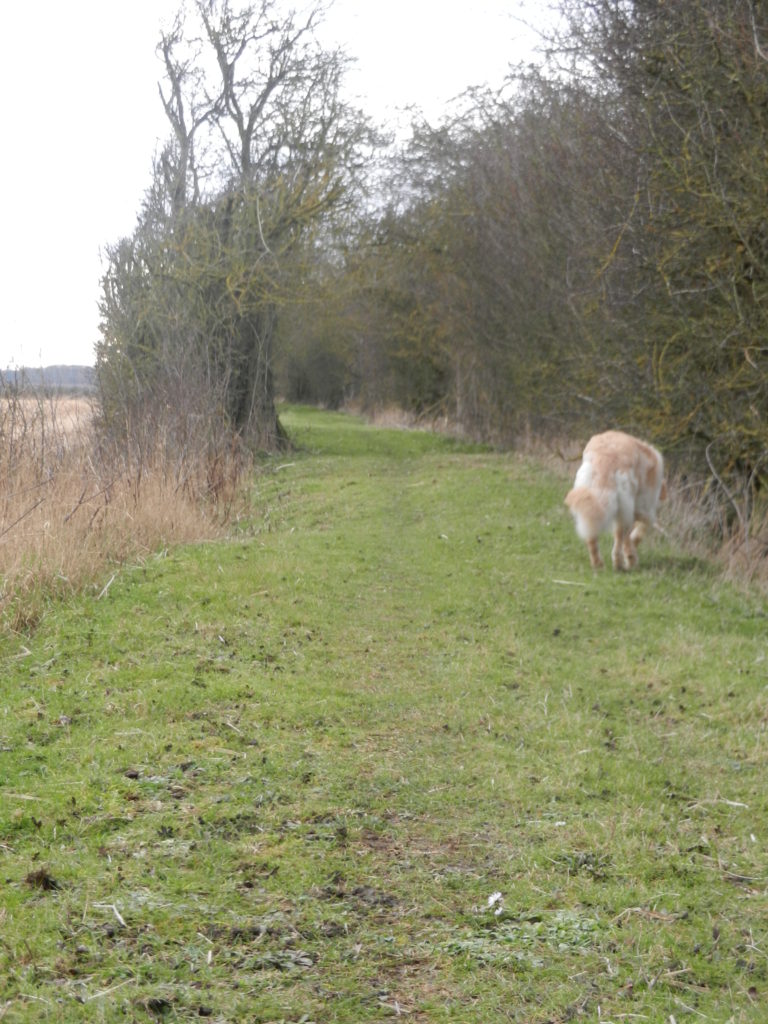
The blog of 28th September explains the changes seen here and the context of the photo.
This photo. shows a section of a public footpath somewhat behind the cement works at South Ferriby (see 28th Sept.). This section of the path that leads to either a circular route back to the River Ancholme or continues south-west to Winterton follows a low ridge fringed by hawthorn hedges. Although I cannot name any confirming evidence, it seems very likely that this is the remnant of an earlier clay bank, although not one along the Estuary side itself, possibly the line of a reserve bank. I say ‘not along the Estuary side’ because lots of things have happened over time between it and the Estuary. For example, a section of Roman road was revealed near to the cement works by changing currents in the 1990s and there are various accounts of the hazards in past centuries in crossing the lower Vale of Ancholme in the vicinity of Ferriby Sluice, in particular one recorded by the antiquarian William Stukeley in the late 18th century (I may have written about this before, but if not need to do so).
A winter’s scene evidenced by the bare twigs, a few years ago evidenced by Molly’s thinness!
A few days ago saw the successful conclusion of a space mission by which the craft had returned to Earth with tiny samples of rock taken from the surface of an asteroid hurtling through space in the outer regions of the Sun’s Solar System. The technical knowhow needed to achieve such an outcome beggars belief. The grains of rock will now be sent to research establishments around the World for analysis, this reminiscent of what happened with fragments of Moon rock in 1969 and 1970. To briefly stray off topic for a moment, space exploration doesn’t need manned flight, the current early exploration of Mars shows this. Manned exploration would be quickly followed by Manned exploitation.
Discussion of the bits of an asteroid led onto musings on the vastness of the Universe, and that the Universe is expanding. The solar system, of which Earth is a part, is a fragment of a galaxy, and there are millions/billions of galaxies. If the asteroid in question did crash into the Earth resulting in its destruction the rest of the Milky Way would not bat an eyelid, let alone the rest of the Universe.
(to be continued).